By Alex Jones
TERRIFYING footage of a huge crocodile snapping away its lunch just inches away from the camera has emerged – although the photographer admits he feels safer in the water with the apex predators than he does on the road with other drivers or on a rollercoaster.
Breath-taking shots show an ultra-close up of the beast’s ferocious teeth, an unprotected snorkeler keeping a croc at bay using just a pole, and a snapshot of the powerful American crocodile peering dangerously into the camera.
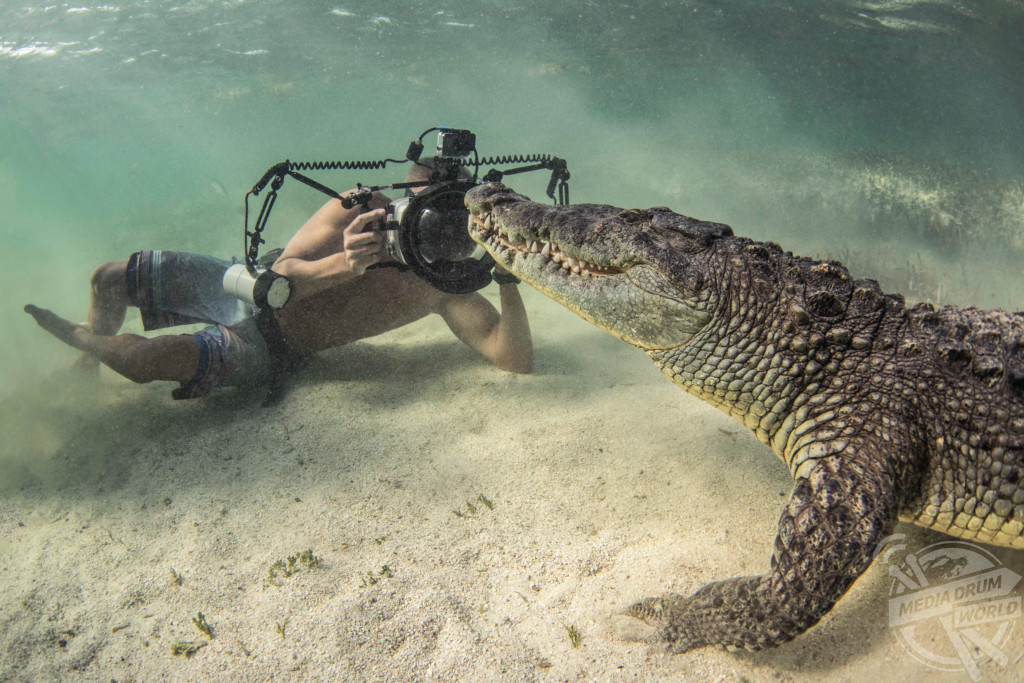
More dramatic shots depict Texan photographer Ken Kiefer II getting up close and personal with the crocodiles in order to get his incredible pictures.
Ken, 49, snapped the exhilarating series of shots at Chinchorro Banks, Mexico as he wanted to get closer to ‘the closest thing to a dinosaur that still inhabit our earth’.
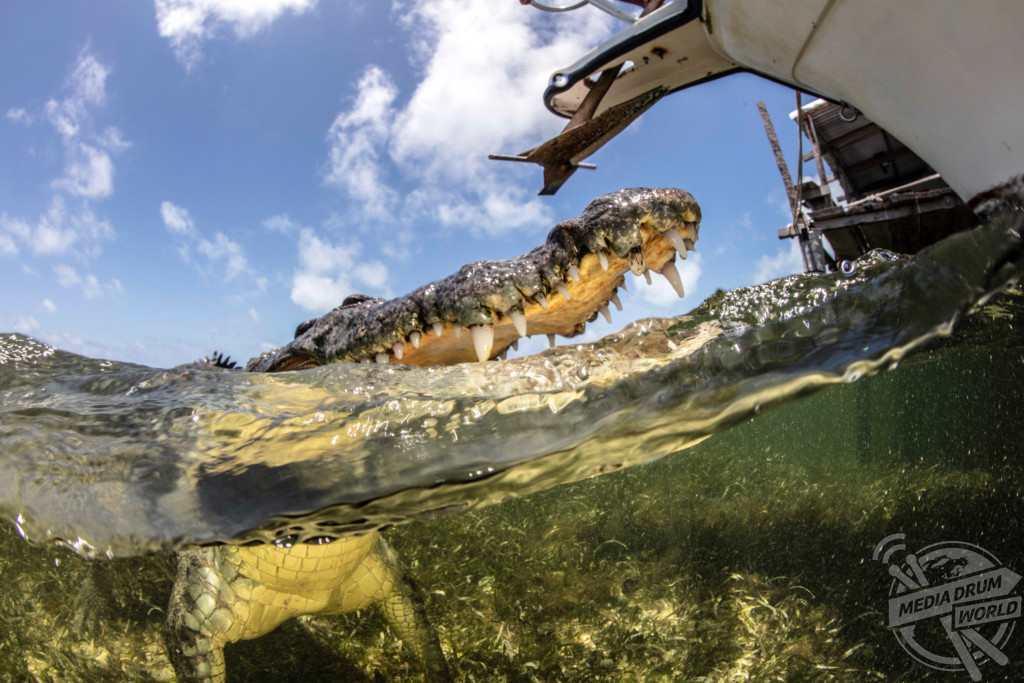
“People actually react much more strongly about us swimming with crocodiles than with sharks,” he said.
“They either think that we fake the pictures, or that we used a pole cam.
“After they accept that we were in the water with the crocodiles, their first reaction is that we’re a little crazy or are thrill seekers or suicidal.
“Trust me, we are neither – I don’t like roller coasters and I love life.
“We aren’t seeking an adrenaline rush, we are doing what we love and hoping to share the experience and the beauty of these predators with others.
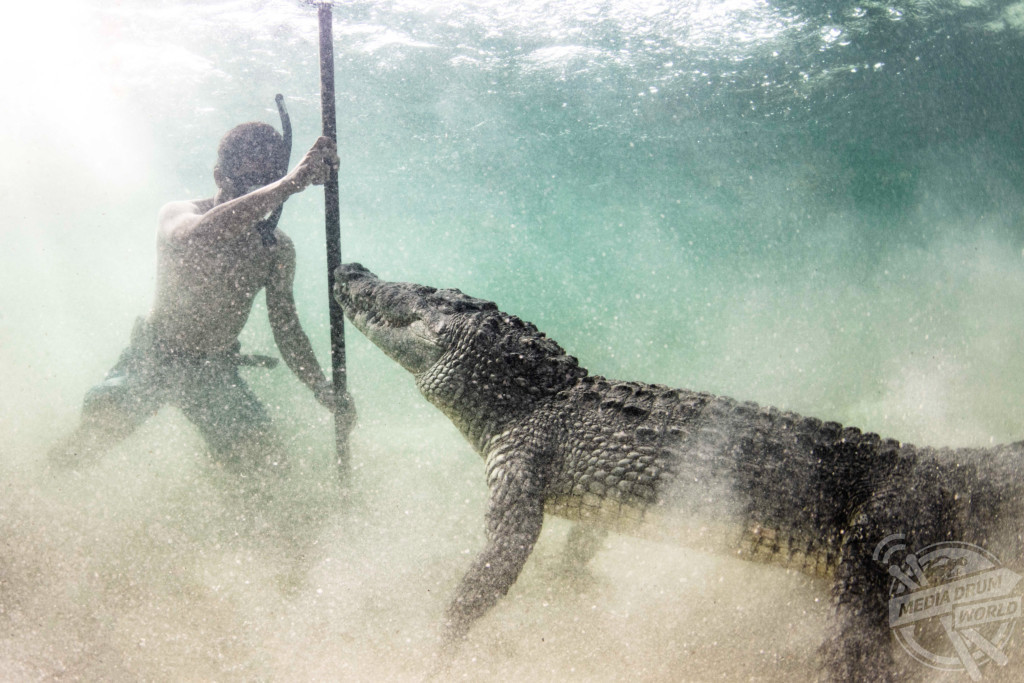
“I love the beauty of nature, and it’s always humbling to be in the water with any large predator.
“I always feel much calmer and happier with crocs and sharks than any time I’m on the freeway with idiot drivers using phones.”
The wild American crocodiles – found at an atoll approximately 50 miles from the coast of the Yucatan Peninsula – are one of the largest species of their kind and can grow up to 20 foot in length, weighing up to 2,000 pounds.
Although considered ‘at risk’ in the wild, its population is increasing after years of illegal poaching and they are typically found in the waters surrounding central America and the Caribbean.
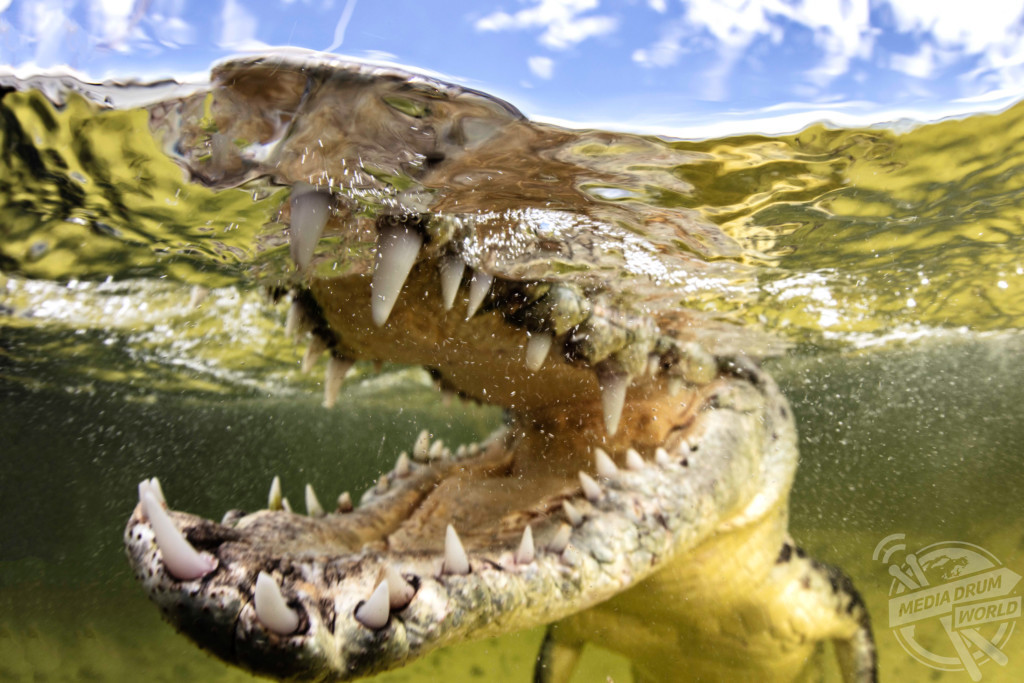
There is a prehistoric look to the creature, a key factor in inspiring Ken to shoot with the robust reptile.
“I’ve been fascinated with large animals my entire life,” the 49-year-old continued.
“When I was 4 or 5 years old, I would bring home stacks of books from the library about sharks, big cats and dinosaurs.
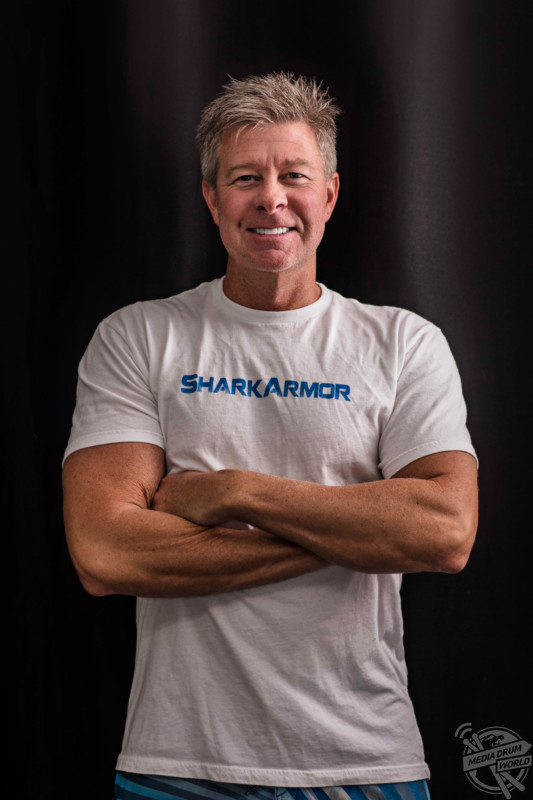
“These crocodiles are the closest thing to a dinosaur that still inhabit our earth.
“For this adventure, we made the trek to a tiny town called Xcalak which is home to XTC Diving, the only place possible to swim with these wild American Crocodiles.
“From Xcalak, we head to an atoll approximately 50 miles from shore called Chinchorro Banks.
“These crocs live in the lagoon in the middle of the atoll. The only accommodations are rickety fishing shacks, on stilts, with no power, water, bathrooms – nothing except what we bring on the boat.
“We spear invasive lionfish and cut the spines off to use as bait to keep the crocodiles around the shack and boat.
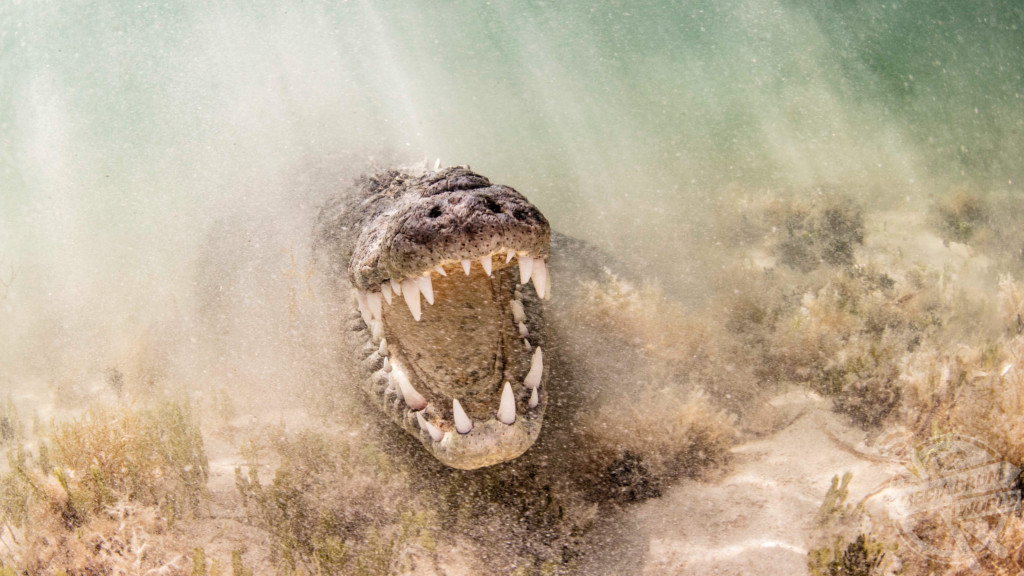
“During the shoot, it is important to remain calm and focused, never taking your eyes from the crocodiles. Safety divers use a pole as a barrier to redirect the crocodiles if they approach people, and I use my camera the same way.
“Never are the crocodiles stabbed, poked, or hit.
“The poles just act as a barrier, so that the crocs bump it and change their approach.
“If they bump into something hard like the pole or my large camera rig, they change their course.”
Ken can be seen capturing his sensational photos, donning just a snorkel and a pair of swim shorts.
“I use a snorkel and mask during this shoot and move very slowly to minimize disturbing the fine silt bottom,” explained the award-winning underwater photographer.
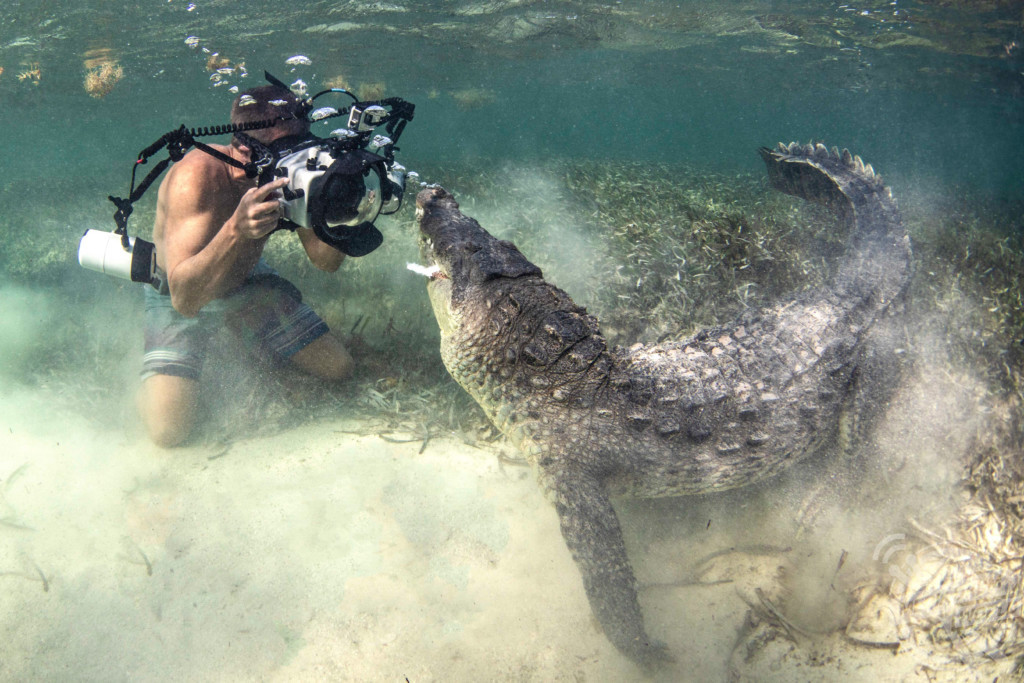
“The visibility can be great at times in this shallow part of the ocean, but the fine silt can quickly ruin it due to weather or excessive movement.
“To take these shots, you must know your camera and gear extensively, it is not safe to be looking at your rig and making adjustments while not keeping your attention on the crocs.
“I use a Canon 5DsR with a fisheye lens, so that I can be extremely close and fill the screen with the croc. The less water between a photographer and subject means more clarity.
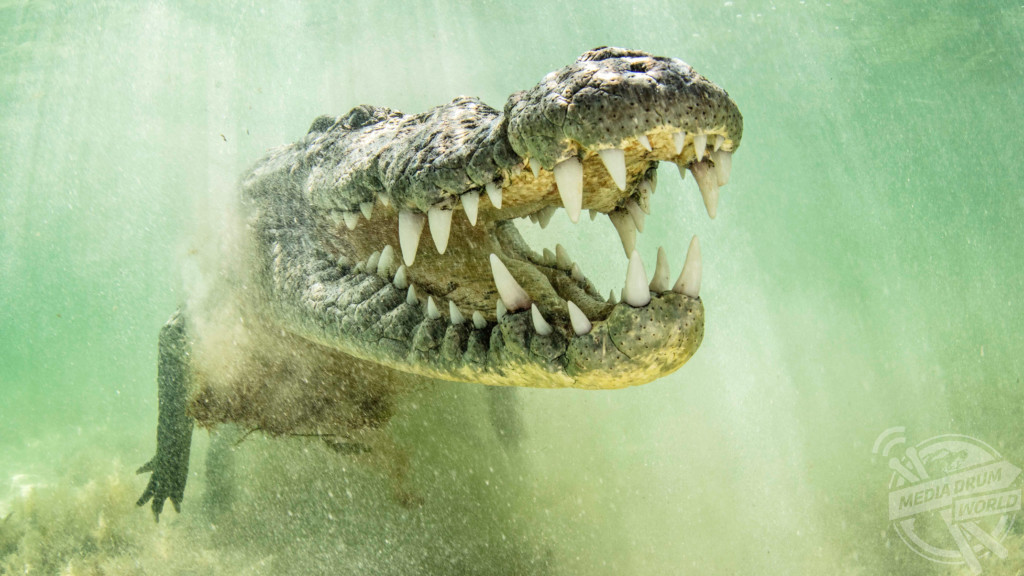
“We are always hoping to portray the beauty of the underwater world, and we want people to care about the role that predators play in this delicate balance.
“I also love being able to show people things that most won’t be able to see themselves.
“I firmly believe that if more people could share the water with these predators, they would have a respect for them and not feel that they are just mindless beasts and might be hesitant to buy crocodile shoes or wallets.”






